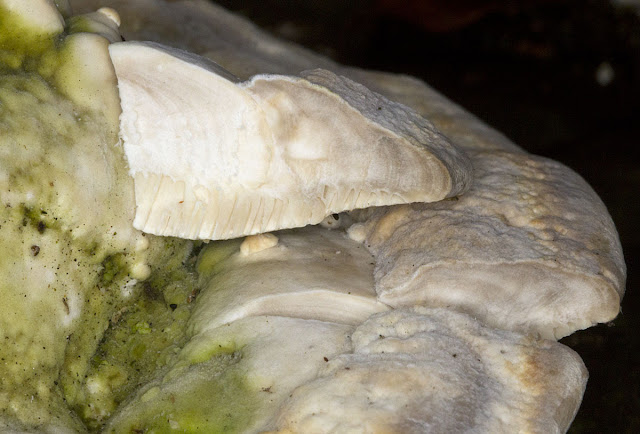 |
| Lumpy Bracket, Trametes gibbosa. The Knoll, Hayes, 18 January 2012. |
The scientific name comes from a Latin word meaning humped or hunched, which you can also see in the word gibbous, applied to the moon when it is more than half full. And it often does have that big lumpy hump in the middle. The green shade is where algae have grown on the surface, which is hairy when it is young, giving purchase for the algae to grow.
It is tough, with a texture like stiff rubber.
 |
| Lumpy Bracket, Trametes gibbosa, showing the underside. The Knoll, Hayes, 18 January 2012. |
In places, the pores are visible at the top of the fungus. You can see some on the left of the first photo. I think this must be where slugs or snails have browsed away the top layers.
 |
| Lumpy Bracket, Trametes gibbosa. Cross-section. The Knoll, Hayes, 26 January 2012. |
What a magnificent thing, in its own terms, this is. And an excellent exposition you have provided here.
ReplyDelete